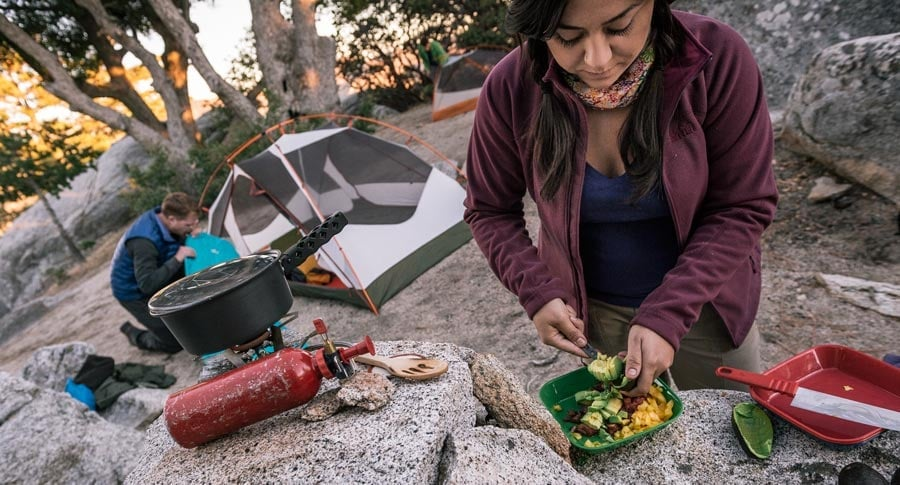
Here, I’ll cover how you should store your food both at night and during the day once you arrive at camp.
In this guide, I will provide essential tips for storing your food at a campsite during both the day and night to ensure safety and prevent attracting wildlife.
Daytime Food Storage: Even though you can see your food during the day, it's crucial to keep it safe from curious critters. When you're not actively eating, store your food in an animal-resistant container. It may seem tedious, but it's necessary to avoid any unwanted visitors enjoying your snacks while you're away from camp.
If you're relaxing at the campsite, keeping your food in sealed containers is sufficient. However, if you plan to leave the campsite, you have several options for ensuring food safety. You can either hang your bear bag properly, store all food in a secure metal locker, or use a bear canister.
Nighttime Food Storage: During the night, it's vital to secure all food, trash, and scented items like toothpaste and deodorant. Even clothing with food spills should be included in the storage.
If you're using the hanging method, make sure to close and hang the bear bag correctly, following the instructions provided earlier.
For those with bear canisters, ensure it is closed properly, then carry it 100 yards downwind from your tent and hide it discreetly between bushes or rocks.
If your campsite has a metal food locker, place all smellable items into odor-proof sacks (OP sacks), and store them in the locker, ensuring it's latched correctly.
Packing And Organizing Food For A Backpacking Trip: There's no one-size-fits-all approach to packing food, but I'll discuss a couple of effective methods:
Ensure the heaviest items are placed at the bottom of your backpack, while lighter ones go near the top to maintain balance.
Keep snacks accessible while hiking, either in the hip pockets of your backpack ("hip snacks") or in the pockets of your trousers ("pocket snacks"). During active hiking, you don't need to seal your bear bag or canister inside your backpack, making lunch and snacks easily accessible.
Place larger shapeable items like powders, grains, tortillas, and trail mixes at the bottom to fill all available space. On top of these, pack bulkier items like ramen, protein bars, and chocolate, filling any gaps with smaller moldable items like oil packets, seasonings, dehydrated veggies, and soup packets.
This method naturally organizes the heavier items at the bottom and the lighter ones on top, preventing your backpack from becoming top-heavy.
When you’re in the backcountry, it’s unlikely that you’ll come upon many facilities with running water. I recommend keeping a small bottle of hand sanitizer in your toiletries bag. Use it after a bathroom trip and before cooking to minimize the chance of contaminating your food
Unless you intend to eat it at the trailhead before you start your trip, don’t bring fresh meat. It spoils quickly, and the chances for cross-contamination and illness are very high. With the exception of produce (that you should eat early on), most of your food should have a reasonably long shelf life. Dehydrating foods that may typically spoil — think: hummus, veggies, and sauces — is a great way to prevent spoilage.
Any packages that you open should be resealed completely. As I mentioned above, repackaging packaged foods into sealable containers is a great way to ensure that you can reseal any opened food.
When it comes to leftovers — especially those that have been cooked or wetted — I recommend consuming them the same day. If you are camping in an area with freezing or near-freezing nights, your excess food may stay good until the next day. To mitigate any risk of contamination, however, I recommend consuming leftovers before the end of the day they were made. Food scraps should be packed out.
Important:
The National Park Service recommends cooking 100 yards away from your tent. Others say 100–200 feet is adequate, but it’s always better to err on the side of caution. Cooking near your tent can produce odors (especially if you spill) that may attract animals during the night.
Conclusion: Proper food storage is crucial for a worry-free backpacking adventure. Ensure your food is inaccessible to wildlife at all times, organize your backpack based on your preferred method, and maintain excellent hygiene when handling food. With these practices, you can have a safe and enjoyable camping experience.
